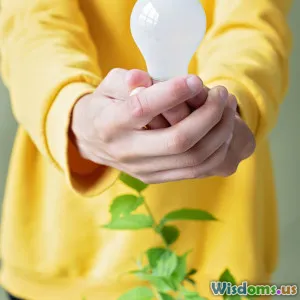
Eco Friendly Homes: Tips for Sustainable Living
6 min read Discover essential tips for creating eco-friendly homes to promote sustainable living and protect our environment. (0 Reviews)
Eco Friendly Homes: Tips for Sustainable Living
In recent years, the importance of sustainable living has gained significant momentum. With climate change and environmental degradation at the forefront of global discussions, many individuals are seeking ways to reduce their ecological footprint. One of the most effective methods is through creating eco-friendly homes. In this article, we will explore various strategies and tips that can help you design, build, or modify your home for sustainability.
Why Choose Eco-Friendly Homes?
Eco-friendly homes are designed to minimize their impact on the environment. They incorporate sustainable materials, energy-efficient systems, and practices that reduce waste and energy consumption. By adopting eco-friendly practices, homeowners can not only contribute to environmental preservation but also save money on utility bills and enhance their quality of life.
1. Energy Efficiency: The Cornerstone of Sustainability
Upgrade to Energy-Efficient Appliances
Investing in ENERGY STAR-rated appliances can significantly reduce energy consumption in your home. These appliances are designed to use less energy while still delivering high performance. For instance, an energy-efficient refrigerator can save you hundreds in energy costs over its lifetime.
Improve Insulation
Proper insulation is key to maintaining a comfortable temperature in your home without over-relying on heating or cooling systems. Consider using sustainable materials like cellulose or spray foam insulation made from recycled content. Ensuring that your home is well-insulated can significantly lower energy bills.
Install Smart Thermostats
Smart thermostats allow you to control your home’s heating and cooling systems remotely, optimizing energy use based on your schedule. They can learn your habits and adjust temperatures accordingly, ensuring efficiency without sacrificing comfort.
2. Water Conservation: A Vital Component
Install Low-Flow Fixtures
Low-flow faucets, showerheads, and toilets can drastically reduce water usage without compromising performance. These fixtures are designed to maintain water pressure while minimizing consumption, making them an easy upgrade for any home.
Rainwater Harvesting
Consider installing a rainwater harvesting system to collect rainwater for irrigation or other non-potable uses. This not only conserves municipal water but also reduces runoff and helps replenish groundwater levels.
3. Sustainable Materials: Building Responsibly
Choose Recycled or Locally Sourced Materials
When building or renovating, opt for recycled materials, such as reclaimed wood or recycled metal. Additionally, using locally sourced materials reduces transportation emissions and supports local economies.
Implement Sustainable Landscaping
Sustainable landscaping involves using native plants that require less water and maintenance. Xeriscaping, which focuses on drought-resistant plants and efficient irrigation, can significantly lower water usage and encourage biodiversity.
4. Renewable Energy Sources
Invest in Solar Panels
Solar energy is one of the most effective ways to power your home sustainably. Installing solar panels can reduce your reliance on fossil fuels and lower your electricity bills. Many governments offer incentives for solar installation, making it a financially viable option.
Explore Wind Energy
If you live in a suitable area, consider investing in a small wind turbine. Wind energy can complement solar power, especially during cloudy days, providing a reliable renewable energy source.
5. Reducing Waste: A Lifestyle Choice
Composting
Composting organic waste not only reduces landfill waste but also enriches your garden soil. Create a compost bin in your backyard or use a countertop composting system to recycle kitchen scraps and yard waste.
Minimize Single-Use Products
Transitioning to reusable products, such as cloth bags, glass containers, and metal straws, can significantly reduce plastic waste. Encourage family and friends to adopt these habits, fostering a community of sustainability.
Conclusion
Creating an eco-friendly home is not just a trend; it's a crucial step towards a sustainable future. By implementing the tips mentioned above, you can contribute to environmental conservation while enjoying the benefits of energy efficiency and reduced utility costs. Remember, every small change counts, and collectively, we can make a significant impact on our planet's health. Embrace sustainable living today and inspire others to join you on this journey towards a greener future.
Rate the Post
User Reviews
Other posts in Sustainable Living
Popular Posts















